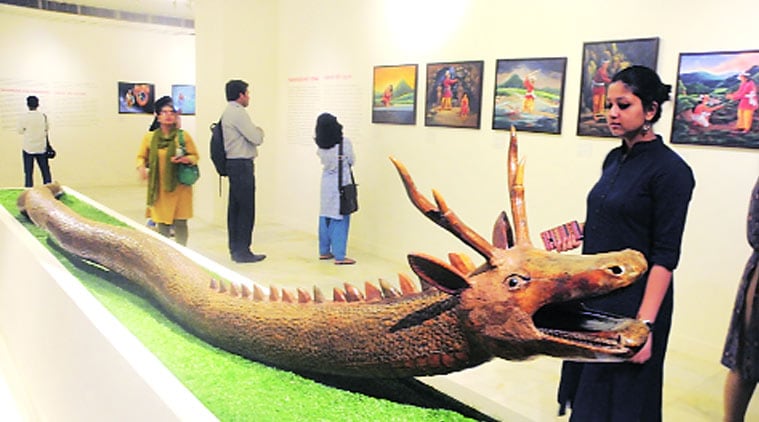Snake Tales
The last time National Museum hosted a major single-object exhibition was in 2013.
 Karam Dineshwar Singh’s sculpture at the National Museum.
Karam Dineshwar Singh’s sculpture at the National Museum.
The 21-foot giant python occupies an entire hall, almost. Placed on an off-white pedestal at the National Museum, the snake in wood, Poubi Lai, represents both its creator and the fascinating folklore that revolves around it. “The detailing is very impressive,” says N Sakmacha Singh, museum associate at Indira Gandhi Rashtriya Manav Sangrahalaya, that has the object in its collection.
Focussing on one object in an exhibition might be uncommon in India, unlike the west, but Singh feels it is deserving in this case. “The piece brings the intangible mythical snake into a tangible form. The (late) woodcarver Karam Dineshwar Singh comes from a family of karigars associated with the royal family,” adds Singh, pointing out that recent paintings displayed in the same hall essay various tales about the mythical snake and a related short film runs on a loop in the adjacent chamber.
According to Meitei mythology, godly king Nongda Lairen Pakhangba could transform himself into a divine snake called Paphal. The giant python is believed to reside under Manipur’s famous tourist attraction, the Loktak lake, till date. But for Karam, it was a dream in 2002 that prompted him to leave his home in search of wood. He followed his dream — to the bank of the Leimatak, where he found a root of a tree to give the shape of a snake, which kept him occupied for the following six months. Inaugurated the same year at the Manipur State Museum, the work has travelled world over since.
The last time National Museum hosted a major single-object exhibition was in 2013, when the museum displayed for 18 days an exquisite 10th-century stone sculpture of Vrishanana Yogini, brought home from Paris.
- 01
- 02
- 03
- 04
- 05



























